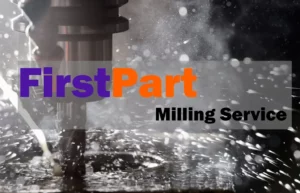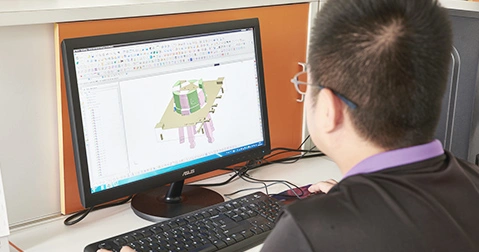How CNC Machining Is Changing the Manufacturing Industry
CNC machining involves the use of computerized controls to remove parts of a material from a workpiece until the final, desired form is attained. Computer numerical control is advancing at breakneck speed; however, the technology is not a new one. Founded in the 700 B.C., CNC machining is a form of subtractive machining that uses digitized controls to guarantee high precision.
CNC is popular for prototyping and machining custom parts. It can also be used along with additive manufacturing techniques like 3D printing to ensure an efficient and effective manufacturing. The technology has revolutionized manufacturing more significantly in last decade. With 2020 just around the corner, we take a look at the biggest impacts that CNC machining and its advancements have had in general prototyping and part manufacturing.
Precision Machining
CNC machining has delivered enhanced control and machining accuracy to ensure the production of highly-precise parts in a single go. Conventional manufacturing often left space for human error that could be costly and counterproductive.
With CNC machining, designers have increased control over the design of their parts and are able to create complex parts with delicate geometries without the fear of misfits and inaccurate machining. 3-axis and 5-axis CNC machining allows for more accuracy and design flexibility by milling and subtracting from a workpiece across multiple axis. The product is a highly accurate part that requires little or no post-machining process.
Material options
Before the advent of CNC machining, creating functional end use parts from some metal alloys and plastic resins was a distant dream. Over the last 10 years, CNC machining has advanced and opened up a variety of materials as feasible options for manufacturing. Through CNC machining, engineers can now explore, appreciate the distinct characteristics of numerous materials and harness those that are more suitable and functional for the creation of certain end parts. Because of CNC machining techniques, several composite metals and alloys have been developed for purpose-specific production.
Process optimization
Because CNC machines can run a manufacturing process from start to finish, there is a high level of process optimization that guarantees optimal results. CNC machines help to do away with assembly processes by manufacturing even the most complex of designs in one go. The machines themselves already house other important components like drills and sanders, which means that you don’t need to dislodge your part during manufacturing to add a feature before coming back to machine. Every process may be completed on your CNC machine workplace. In 2020, we expect to see robots, co-bots as well as an increased interaction with CNC machines in the workplace to optimize every aspect of manufacturing and bolster the quality of the workforce.
Turnaround times
CNC machining has significantly reduced the product development cycle through improved precision, computer aided designs and rapid prototyping. Turnaround times is one of the most important aspects of manufacturing which may influence the success or failure of a product in the market. With the aid of CNC machining, designs can be loaded unto the equipment and milled to precision in a number of hours.
The level of automation in CNC machines as well as the digital control allow for high fidelity parts to be produced as efficiently as possible in the least-possible time.
Prototyping
Prototyping helps many product designers and manufacturers to quickly test their concepts, iterate design and evaluate functionality without going so far in the product development cycle.
Before 3D printing and CNC machining, prototyping could cost almost as high as the final product itself. This is usually a price too much to pay to learn that your design may be flawed. With CNC machining, engineers can engage in rapid prototyping to develop and improve their product ideas on-the-go. CNC machining has therefore become one of the go-to methods for product testing and evaluation early on in the manufacturing stage to detect, prevent and correct issues that may arise later after time and resources have been expended.
Sustainability
The CNC machining process is highly sustainable because of its high accuracy, material conservation and process optimization.
CNC machines are built to house a number of parts that a conventional machine shop may otherwise need to own individually. With a CNC machine, every part of your manufacturing can be processed and completed on the same equipment. Because CNC machining technique have no needs for tooling, the overall landing cost of the product is reduced, making the process highly sustainable. The CAD/CAM models of the part can be used over and over again without any risk of wear or tear as in the case of tooling. Simple design errors can easily be corrected, and processes can be immediately re-run.
CNC machines eliminate the need for human interactions. It is faster and more sustainable without any risk of fatigue that may affect product output.
FirstPart CNC Machining in China
Exploit Firstpart for our expertise across additive, CNC and conventional manufacturing techniques. Our array of services include CNC machining, 3D printing, Rapid Tooling, Die casting, Rapid prototyping, Plastic Injection Molding, Urethane Casting, Aluminum Extrusion, Post-machining/Finishing services and much more.
As we understand the start-up challenges that is faced by new businesses, engineers and product developers, we offer both mass production, bridge tooling and low-volume prototyping/manufacturing. Our services are flexible, saleable and innovative, with a team of engineers and design experts available to support you through your entire product development cycle.
Click here to get in touch with us and receive a free quote and project review. To contact us via phone or email, or for all other inquiries, please click here.










